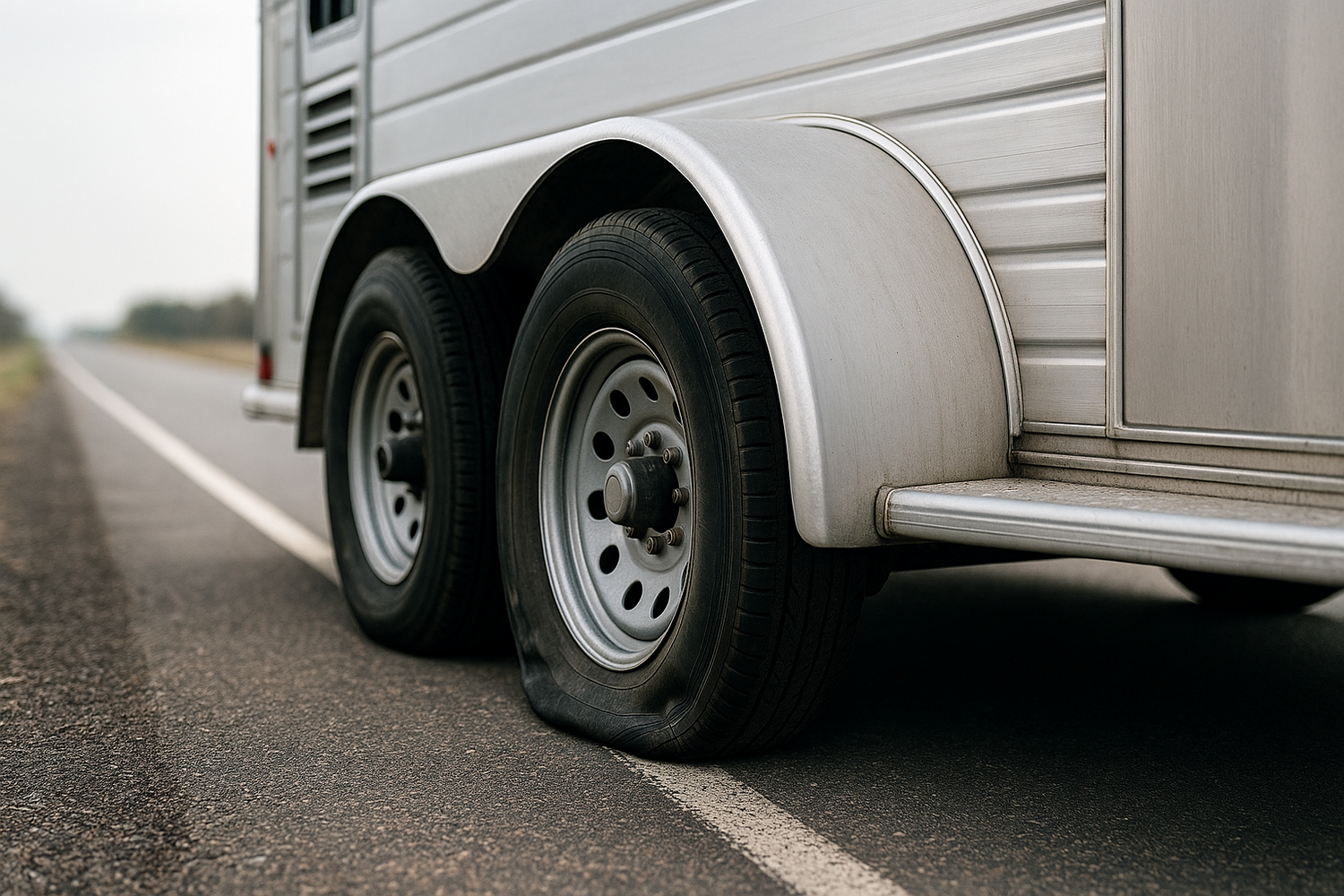When it comes to ensuring the safety and performance of your trailer, understanding the condition of its tires cannot be overstated. Tires are the only contact point between your trailer and the road, making their condition vital for optimal handling, braking, and overall safety.
Regularly checking your trailer tires helps prevent accidents and costly breakdowns. Here are key reasons why maintaining good tire condition is essential:
- Safety: Worn or damaged tires can lead to blowouts or loss of control, posing a serious risk to you and other road users.
- Fuel Efficiency: Properly inflated and maintained tires improve fuel efficiency, saving you money on long-haul trips.
- Longevity: By monitoring tire wear and tear, you can extend the life of your tires, reducing replacement costs.
- Legal Compliance: Many regions have regulations regarding tire conditions for trailers. Keeping your tires in good shape ensures you remain compliant.
To ensure you’re making the right assessments, it’s important to know how to tell if trailer tires are good. Regular inspections can help detect issues early, allowing for timely repairs and replacements. Tow with peace of mind, knowing that trailerwatchdog is standing guard.
Visual Inspection of Trailer Tires for Damage
One of the simplest yet most effective methods to assess the condition of your trailer tires is through a visual inspection. This proactive approach can help you identify potential issues before they escalate into serious problems. Here’s what to look for during your inspection:
- Tread Depth: Check the tread depth using the penny test. Insert a penny into the tread groove; if you can see the top of Lincoln's head, it's time for a replacement.
- Cracks and Cuts: Inspect the sidewalls as well as the tread for cracks, cuts, or any visible damage. These can weaken the tire structure and lead to blowouts.
- Bubbles and Blisters: Look for any bulges or blisters on the tire surface. These can indicate internal damage and require immediate attention.
- Foreign Objects: Remove any stones, nails, or debris lodged in the tread. These can cause leaks and affect tire performance.
- Uneven Wear: Uneven tire wear can be a sign of misalignment or improper inflation. Check for bald spots or excessive wear on one side.
Conducting a thorough visual inspection regularly is crucial in maintaining tire health. By keeping an eye on these indicators, you can ensure your trailer tires remain safe and effective for your journeys.
Measuring Tire Tread Depth for Safety

Understanding how to measure tire tread depth is essential for ensuring the safety and performance of your trailer. Tread depth is a crucial factor that impacts traction, handling, and overall safety on the road. Here are effective methods for measuring tire tread depth:
- Penny Test: As mentioned earlier, the penny test is a quick and easy way to check tread depth. Insert a penny into the tread groove with Lincoln’s head facing down. If you can see the top of his head, the tread is too shallow, and the tires should be replaced.
- Tread Depth Gauge: For a more accurate measurement, invest in a tread depth gauge. This tool can provide you with precise readings in millimeters or 32nds of an inch. Simply insert the probe into the tread and read the measurement.
- Quarter Test: Similar to the penny test, you can use a quarter to check tread depth. Insert the quarter into the tread groove; if the top of Washington's head is visible, it indicates that the tread is worn and the tire should be replaced.
Regularly measuring your tire tread depth is vital for maintaining safe driving conditions. Tires with insufficient tread depth can lead to reduced traction, particularly in wet or slippery conditions, increasing the risk of accidents. By staying vigilant about your tire health, you can travel with confidence and peace of mind.
Checking for Uneven Wear Patterns on Tires

Uneven wear patterns on trailer tires can indicate underlying issues that may compromise your safety on the road. Recognizing these patterns is crucial for timely maintenance and tire replacement. Here are some common signs of uneven tire wear:
- Center Wear: If the tread is worn down in the center more than on the edges, it could suggest that the tire is overinflated. This condition can lead to premature tire failure and should be corrected immediately.
- Edge Wear: Worn edges indicate that the tire may be under-inflated or misaligned. This can result in poor handling and reduced traction, particularly during turns.
- Patchy Wear: If you notice patches of wear, it could signify issues such as improper alignment or suspension problems. Such irregularities may affect the overall performance of your trailer.
- Cupping or Scalloping: These patterns appear as high and low spots across the tread surface, often caused by worn suspension components or improper balancing. Cupping can lead to a noisy ride and should be addressed as soon as possible.
Regularly inspecting your tires for these uneven wear patterns can help you identify potential problems before they escalate into serious issues. By addressing the root causes of uneven wear, you can extend the life of your tires, enhance your trailer's performance, and ensure a safer towing experience.
Examining Tire Pressure Regularly for Optimal Performance

Maintaining the correct tire pressure is vital for the optimal performance of your trailer. Tire pressure affects not only fuel efficiency but also safety and handling. Here’s why examining tire pressure regularly is essential:
- Safety: Properly inflated tires provide better grip and control, reducing the risk of blowouts and accidents. Under-inflated tires can overheat and lead to catastrophic failures.
- Fuel Efficiency: Tires that are inflated to the manufacturer’s recommended pressure can improve fuel efficiency. Under-inflated tires increase rolling resistance, causing your vehicle to consume more fuel.
- Tire Longevity: Maintaining optimal pressure helps distribute weight evenly across the tire's surface, leading to more even wear. Regular checks can extend the life of your tires and save you money in the long run.
- Load Capacity: Each tire has a maximum load capacity that is directly influenced by its pressure. Overloading tires that are not properly inflated can lead to severe damage and jeopardize the safety of your trailer.
To ensure tire pressure remains at the correct level, it is advisable to check it at least once a month and before long trips. Use a reliable tire pressure gauge and compare the readings to the specifications provided by the trailer manufacturer. Remember, tire pressure can fluctuate with temperature changes, so be mindful of seasonal variations.
When to Replace Trailer Tires for Safety Reasons

Knowing when to replace your trailer tires is crucial for maintaining safety on the road. Over time, tires can wear down and lose their effectiveness, increasing the risk of accidents. Here are a few indicators that it may be time to replace your trailer tires:
- Tread Depth: The tread on your tires is essential for traction. Use the penny test: insert a penny into the tread with Lincoln's head upside down. If you can see all of Lincoln's head, it's time for new tires. A tread depth of 2/32 of an inch or less is a clear sign that replacement is necessary.
- Cracking and Sidewall Damage: Inspect the sidewalls for cracks, cuts, or bulges. These imperfections can compromise the tire's integrity and lead to blowouts. Any visible damage, especially if it extends beyond the surface, signals the need for replacement.
- Age of the Tire: Regardless of tread wear, tires should generally be replaced every six years, and many manufacturers recommend a maximum of ten years regardless of usage. Check the DOT code on the tire sidewall to determine its manufacturing date.
- Vibration or Noise: Unusual vibrations or noises while driving can indicate a problem with the tires. If you experience these symptoms, have your tires inspected by a professional. Uneven wear patterns may require immediate attention.
Regular maintenance and inspections can help identify these issues early, preventing potential failures on the road. For added peace of mind, consider implementing a trailer monitoring system to detect tire conditions in real-time.
Tow with peace of mind, knowing that trailerwatchdog is standing guard.








